We’d like to remind Forumites to please avoid political debate on the Forum.
This is to keep it a safe and useful space for MoneySaving discussions. Threads that are – or become – political in nature may be removed in line with the Forum’s rules. Thank you for your understanding.
The MSE Forum Team would like to wish you all a Merry Christmas. However, we know this time of year can be difficult for some. If you're struggling during the festive period, here's a list of organisations that might be able to help
📨 Have you signed up to the Forum's new Email Digest yet? Get a selection of trending threads sent straight to your inbox daily, weekly or monthly!
Has MSE helped you to save or reclaim money this year? Share your 2025 MoneySaving success stories!
Damp wall and rotten joists
Comments
-
When you replace the joists you could use joist hangers to save building them into the wall.1
-
So . . . spent a few hours this evening pursuing the potential damp causes.
I took up the floorboards at the other end of the room and it was obvious there is a damp course. As stated by an eager eyed member previously, it was directly below the air bricks / joists. It looks to be a 'bitumen' type material.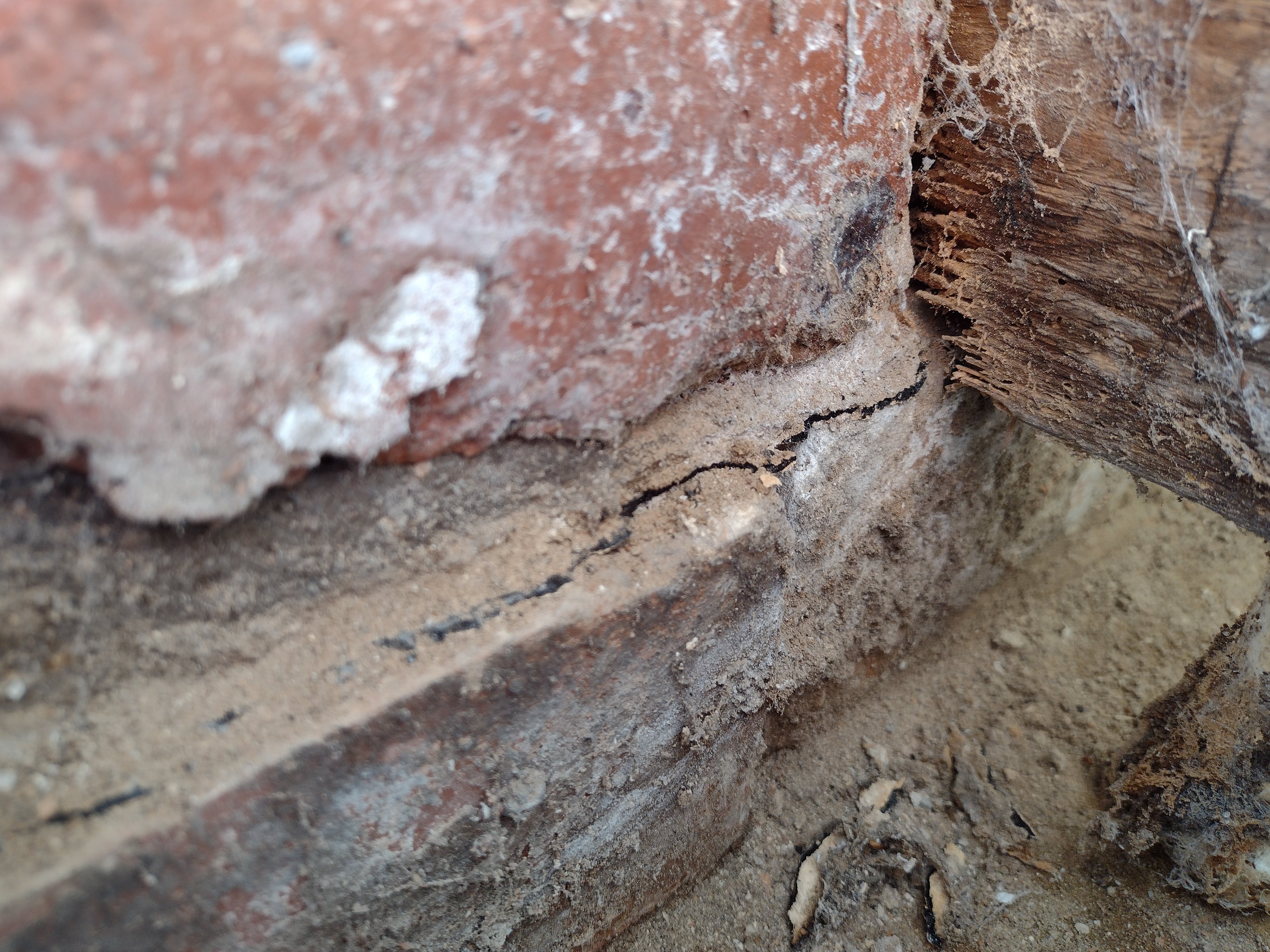
I have pulled the the ground a away from the house to create a trench and in the below photo, the wood indicates the mortar level with the DPC. Clearly, the ground was too high . . .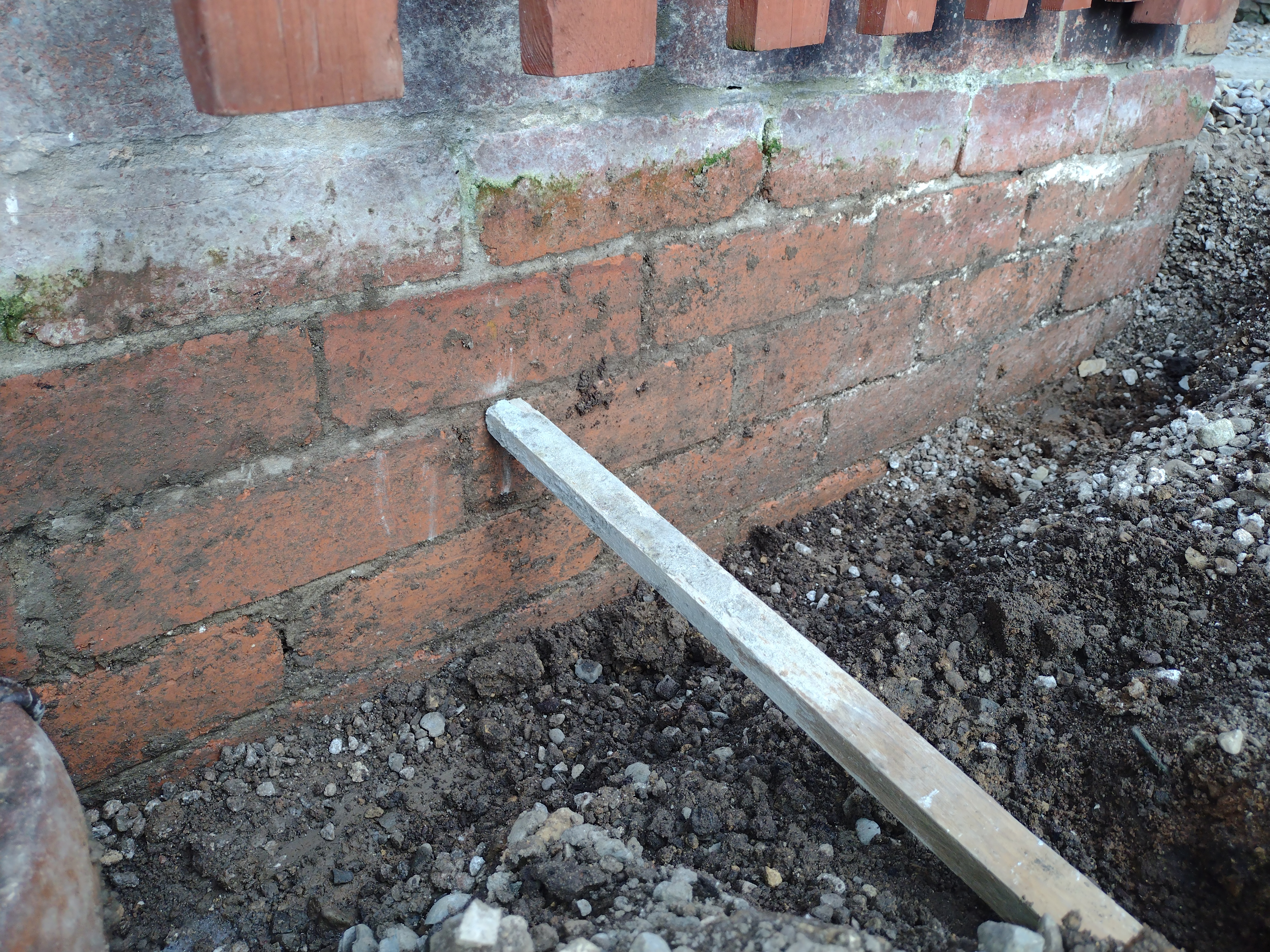
Moving around to the front of the house, the render bridges the DPC level.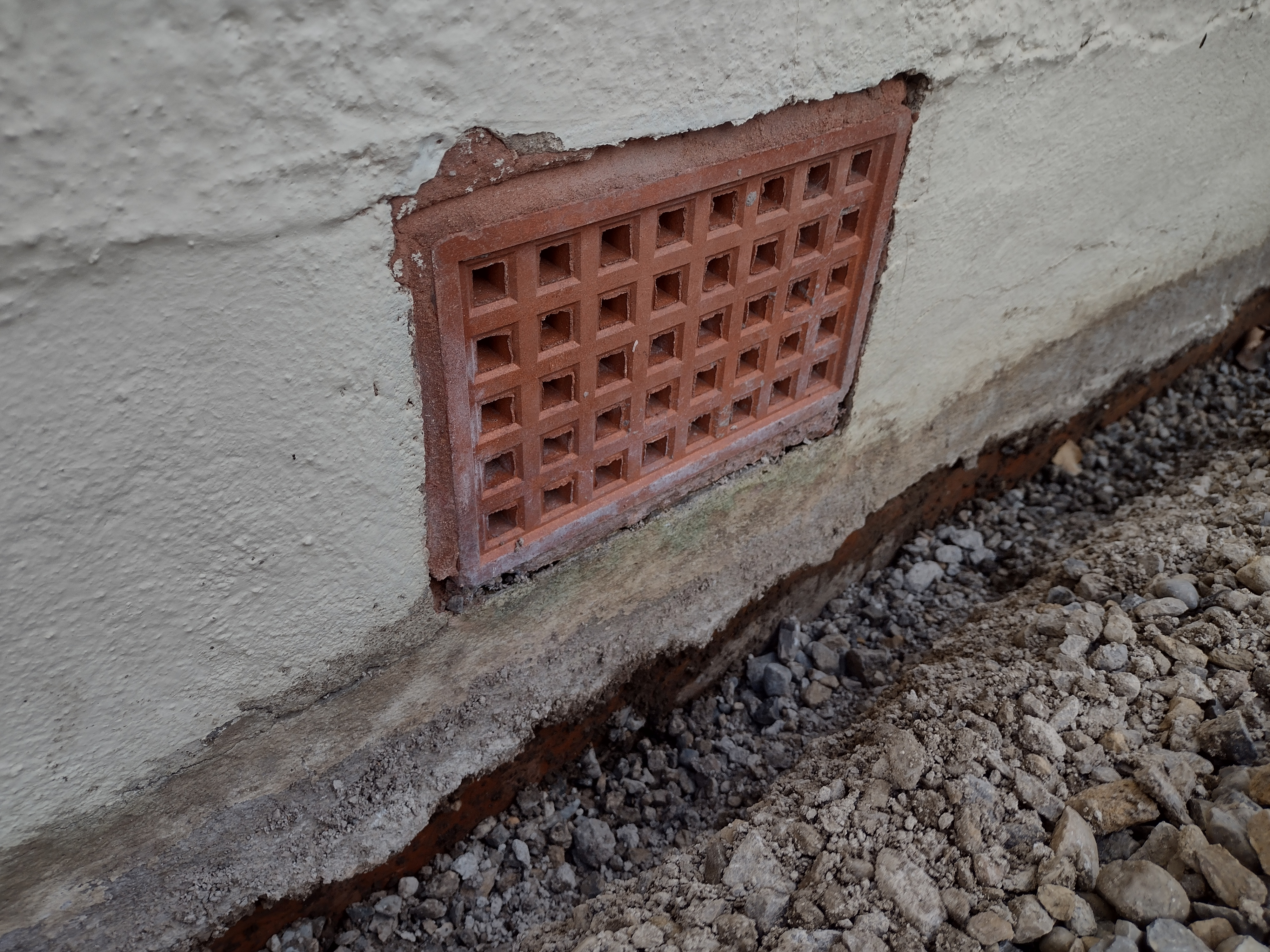
The cavity is breached 3 - 4 brick levels up with debris: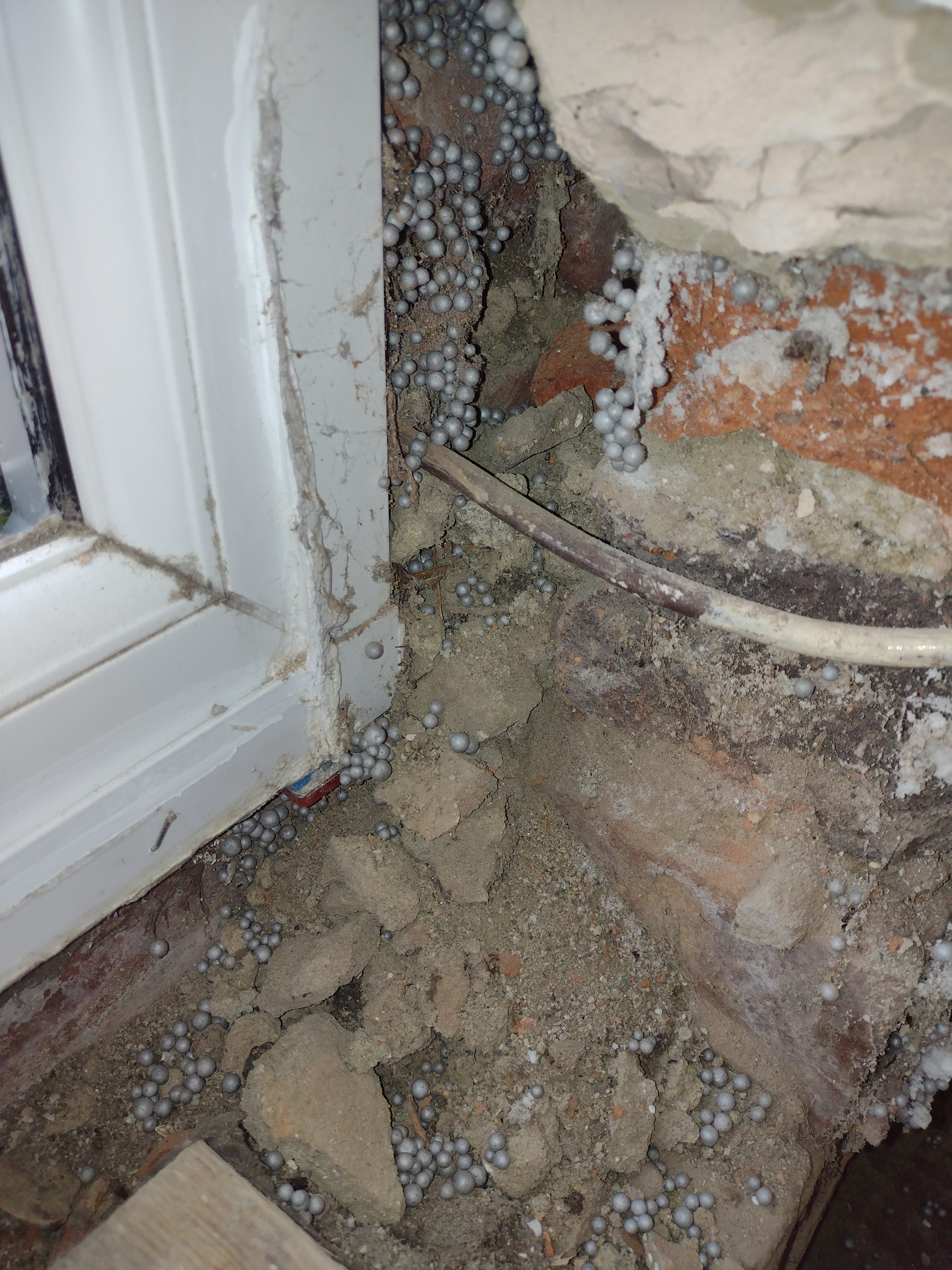
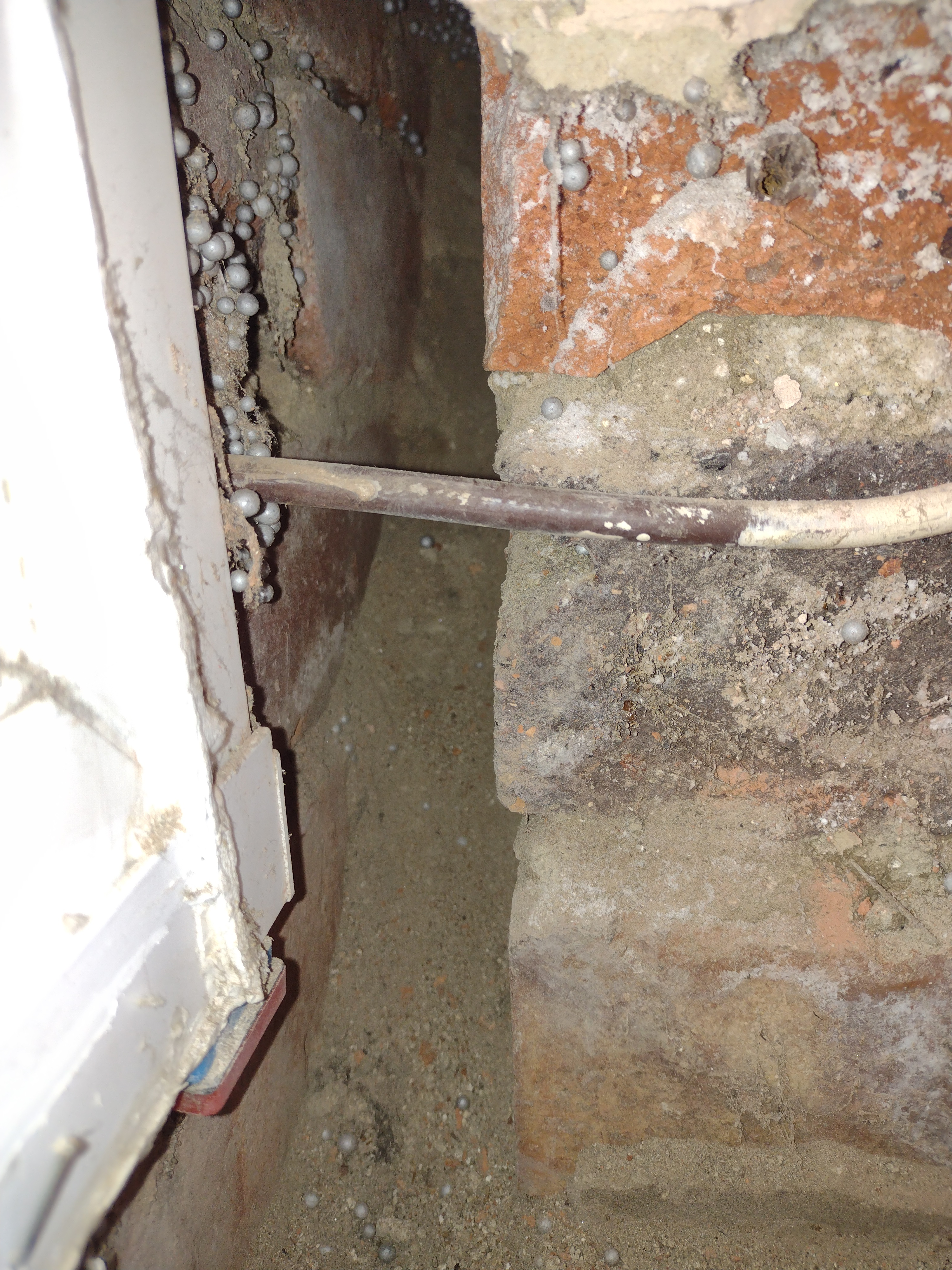
And yes . . . cavity wall insulation .
.
The ends of the joists where completely encompassed in debris too: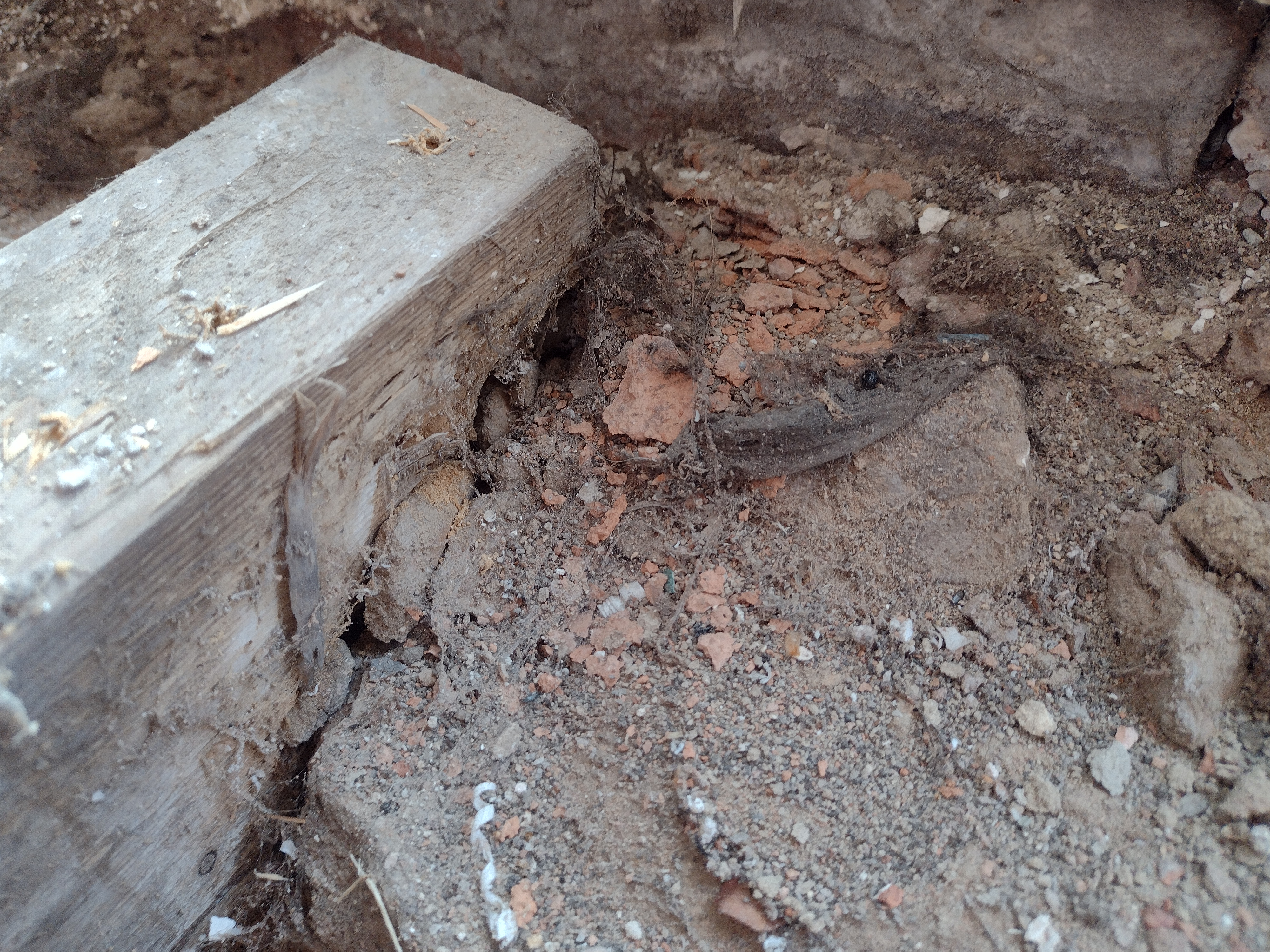
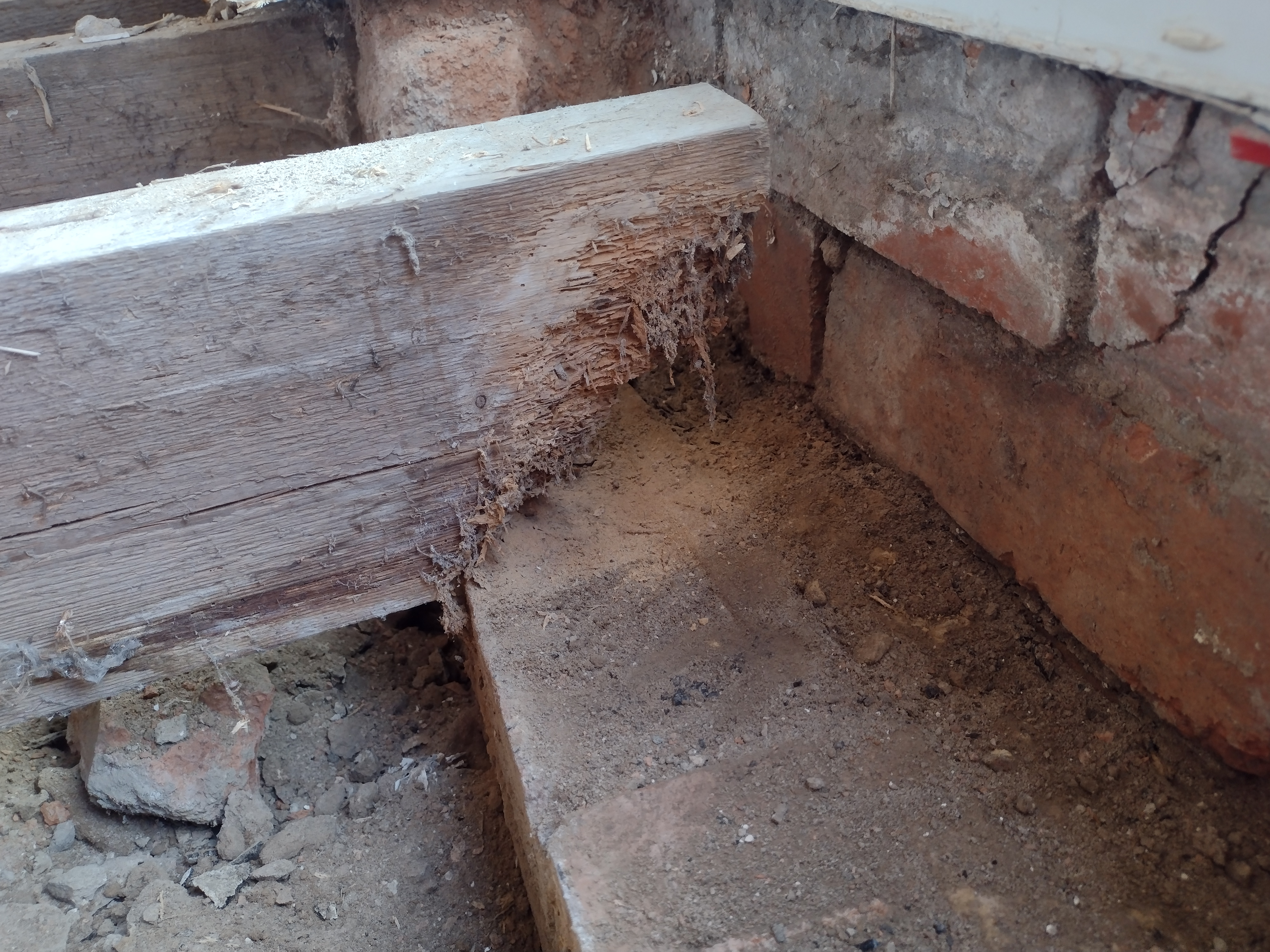
So . . . . basically a checklist on how to guarantee damp.
So plan of action is to:- Clear away all debris from around joists to ensure good airflow.
- Clear cavity debris.
- Create new DPC under area's new joists will be laid using a combination of tanking slurry & DPC material.
- Repair joists by cutting back 12" and fish-plating a new section of joist that will sit on the original ledge / socket.
- Remove render on front of house below DPC course.
- Clean exterior bricks and apply tanking slurry two bricks courses below DPC and 1 brick course above DPC around entire exterior circumference.
- Ensure exterior ground level is below DPC course.
Now . . . my only concern is how to know if the existing DPC has failed. The small bits I pulled away appear to be very brittle . . .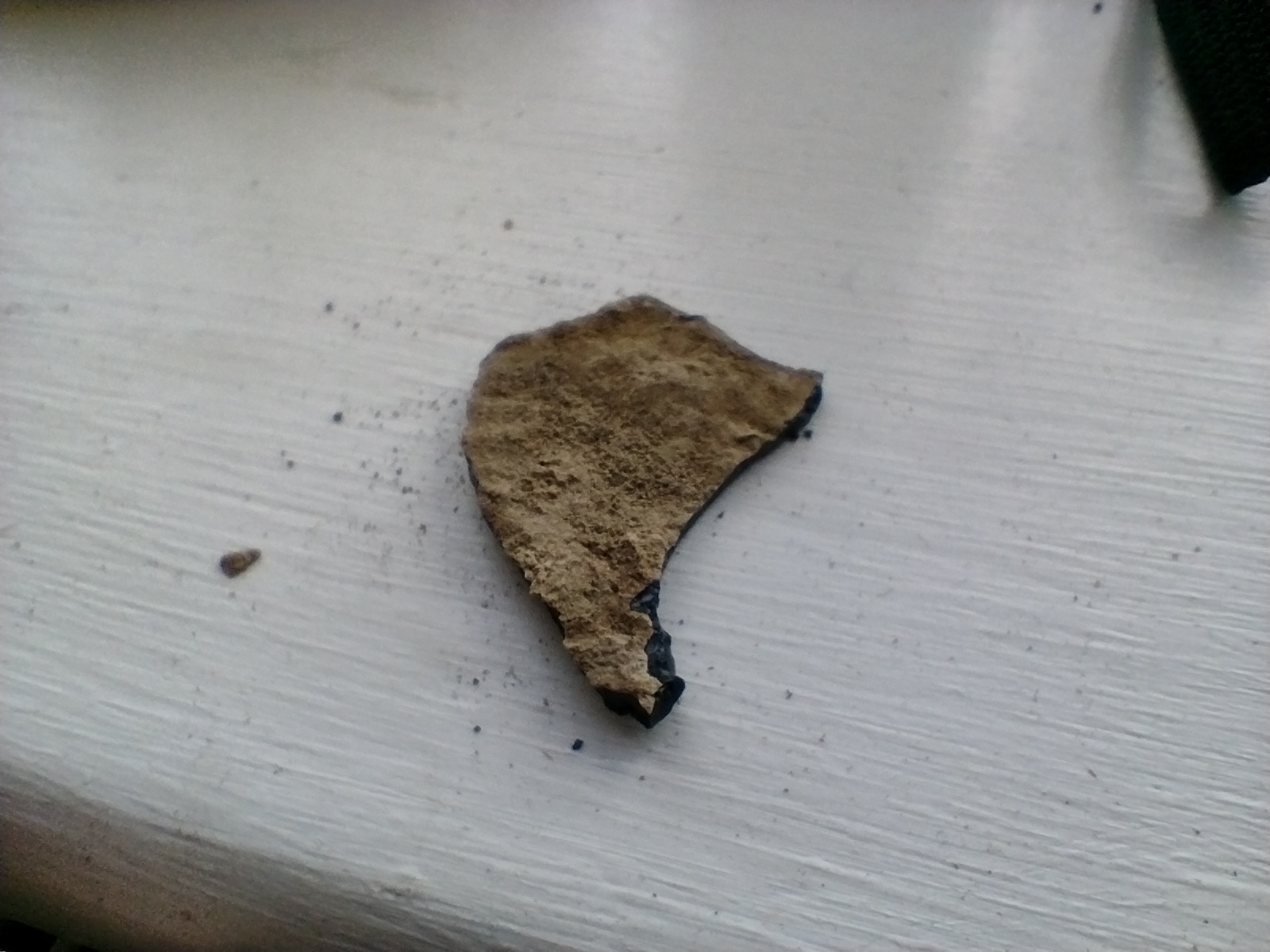
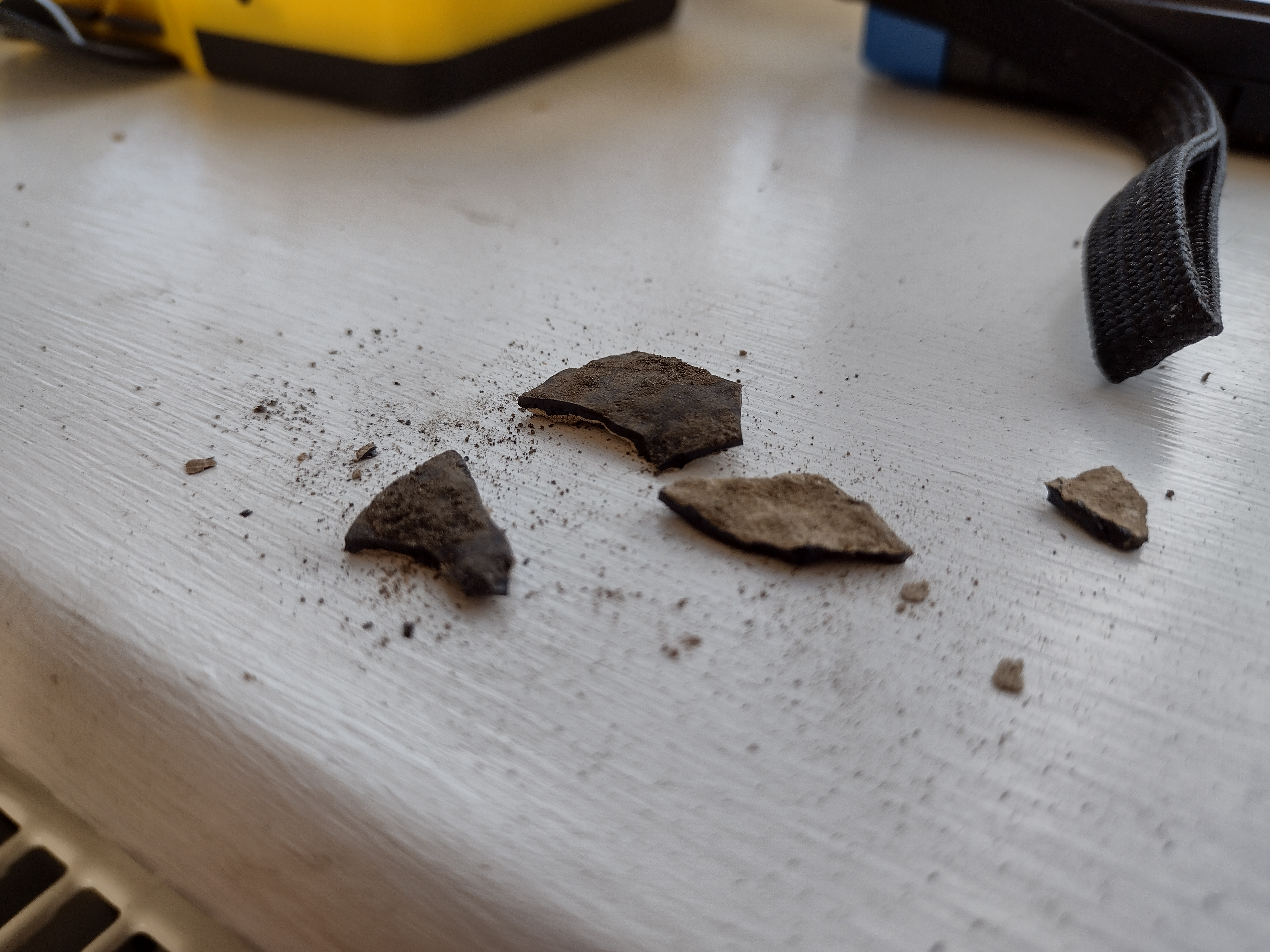
Do I inject a chemical DPC one brick course below the existing DPC as belt and braces? I would be interested in your thoughts on how effective and long lasting it would be . . I'm pretty confident that with the steps stated above, the house will be back to how it was designed and we shouldn't see any damp as long as we keep the exterior ground level lower than the DPC . . .1 -
Don't bother with a chemical DPC. Make sure there is at least 150mm from the bottom of the joists to the ground.0
-
I would be wary of using tanking slurry anywhere on your walls - It will be hard & brittle. The bricks are bedded in on a lime mortar which allows for some degree of movement from thermal contraction/expansion. This movement will ultimately result in the tanking slurry cracking. As for chemical DPC, save your money. Cleaning out the cavity along with reducing the exterior ground levels should be enough to stop the damp getting through.Cutting the joists and splicing in new sections - Do you have any dwarf walls supporting the joists ?If so, try to arrange any splices to sit on the dwarf walls. Or better still, sit the new joists beside the old joists over the top of the dwarf walls.Be careful digging out soil around the base of the wall outside - The foundations may well be shallow, and you risk exposing the footings.Any language construct that forces such insanity in this case should be abandoned without regrets. –
Erik Aronesty, 2014
Treasure the moments that you have. Savour them for as long as you can for they will never come back again.1 -
I'm not sure it's possible to get 150mm below the DPC, however I will do what I can. As with everything, it will be a compromise, however just getting below the DPC will be better than what I have now.stuart45 said:Don't bother with a chemical DPC. Make sure there is at least 150mm from the bottom of the joists to the ground.
Is there anything you would recommend on the exterior walls or just leave them bare? With regards the repair of the joists, I wasn't planning on splicing, just cutting straight and butting the new section of joist up with a plate of wood either side bolted with 4 coach bolts and spiked washers in a 'w' pattern. What's the issue with exposing the footings? I haven't as of yet. By dwarf walls, if you mean intermediate walls along the lengths of the joists? Yes there are.FreeBear said:I would be wary of using tanking slurry anywhere on your walls - It will be hard & brittle. The bricks are bedded in on a lime mortar which allows for some degree of movement from thermal contraction/expansion. This movement will ultimately result in the tanking slurry cracking. As for chemical DPC, save your money. Cleaning out the cavity along with reducing the exterior ground levels should be enough to stop the damp getting through.Cutting the joists and splicing in new sections - Do you have any dwarf walls supporting the joists ?If so, try to arrange any splices to sit on the dwarf walls. Or better still, sit the new joists beside the old joists over the top of the dwarf walls.Be careful digging out soil around the base of the wall outside - The foundations may well be shallow, and you risk exposing the footings.
Goes without saying, I really appreciate all the assistance.0 -
graeme16 said: What's the issue with exposing the footings? I haven't as of yet. By dwarf walls, if you mean intermediate walls along the lengths of the joists? Yes there are.The foundations & footings should be a minimum of 150mm below the surface to avoid the effects of frost heave - Not a major issue in the south of England, but the further north you go, the more likely you could experience it.A picture to illustrate where/how to overlap joists -
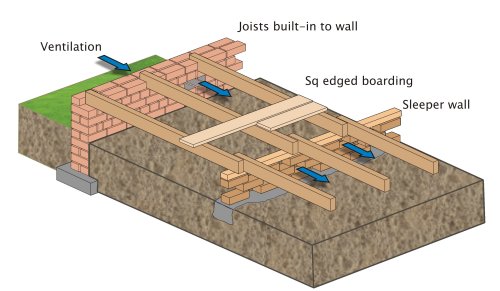
Any language construct that forces such insanity in this case should be abandoned without regrets. –
Erik Aronesty, 2014
Treasure the moments that you have. Savour them for as long as you can for they will never come back again.0 -
Nice work, Graeme - very thorough!
Is there any mileage in fully covering the joist ends in DPC/M material? I think I've seen this suggested somewhere, but don't know if it's good advice or not. Ie, instead of just sitting the new joist ends on a piece of DPC, it was suggested the whole end was wrapped in a DPM material to fully sleeve it.
Thoughts?0 -
People do sometimes wrap the joists tails with DPC as well as treating them. Others prefer to use joists hangers to keep them out of the,wall.1
-
At one time, building regs (as they were back then) recommended dipping the ends of joists in bitumen before embedding them in walls. Certainly wouldn't hurt giving them a good coating of wood preservative today.Bendy_House said: Is there any mileage in fully covering the joist ends in DPC/M material? I think I've seen this suggested somewhere, but don't know if it's good advice or not.
Any language construct that forces such insanity in this case should be abandoned without regrets. –
Erik Aronesty, 2014
Treasure the moments that you have. Savour them for as long as you can for they will never come back again.1 -
Looking at the latest photos, the cavity fill is still a bit too high. Any moisture from driving rain or condensation in the cavity will run down the brickwork and sit at the bottom of the joists. Ideally it should be well below the DPC.1
Confirm your email address to Create Threads and Reply

Categories
- All Categories
- 352.9K Banking & Borrowing
- 253.9K Reduce Debt & Boost Income
- 454.7K Spending & Discounts
- 246K Work, Benefits & Business
- 602.1K Mortgages, Homes & Bills
- 177.8K Life & Family
- 259.9K Travel & Transport
- 1.5M Hobbies & Leisure
- 16K Discuss & Feedback
- 37.7K Read-Only Boards



